expireddoboy007 posted Jun 29, 2022 02:18 AM
Item 1 of 5
Item 1 of 5
expireddoboy007 posted Jun 29, 2022 02:18 AM
512GB Teamgroup AX2 3D NAND 2.5" SATA Internal Solid State Drive
+ Free Shipping$37
$60
38% offAmazon
Visit AmazonGood Deal
Bad Deal
Save
Share
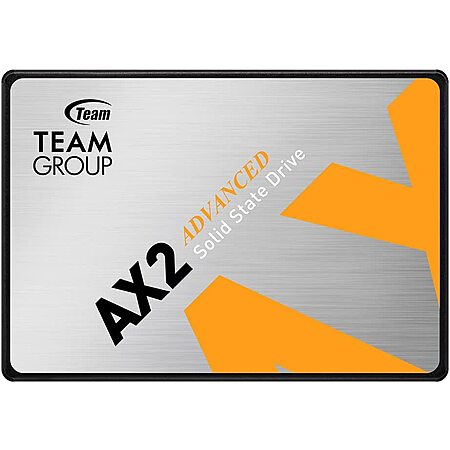
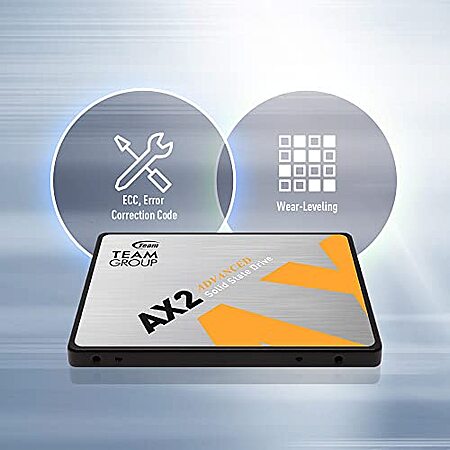
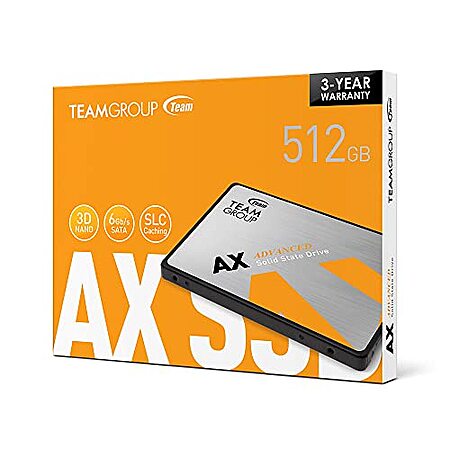
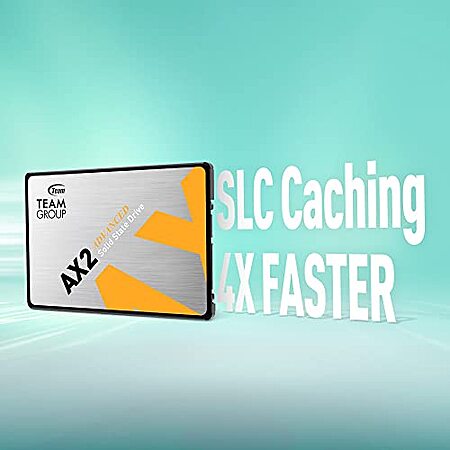
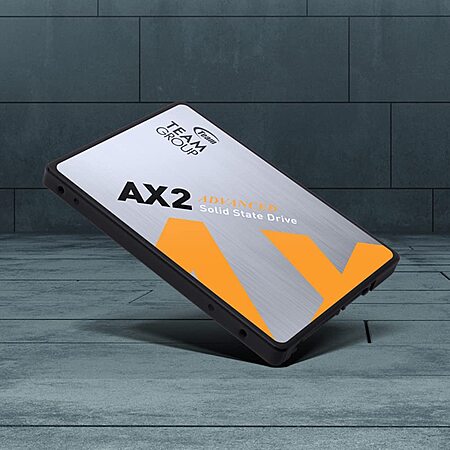





Leave a Comment
Top Comments
SSD's originally came out in SLC form which means each cell had it's own controller and you could write 1 byte at a time and it would just write to that cell. The problem is that this makes the SSD VERY expensive because every single cell needed a controller. Later came MLC then TLC now we have QLC.
SLC = 1 cell, 1 controller
MLC = 2 cells, 1 controller
TLC = 3 cells, 1 controller
QLC = 4 cells, 1 controler
(BTW What I am calling the controller basically is the read/write circuit so if you had to write 1 byte of data with SLC you only wrote the one byte. With QLC you have to write all four cells at the same time. This takes a longer time and slows down the writes and also makes the SSD wear a bit faster as you are sometimes writing data that did not need to be written to.)
So to speed up the writes once MLC/TLC/QLC hit, they started adding RAM to act as a buffer to speed up the writes. This cost more money but could really help make an SSD faster as long as what you were writing fit in the buffer.
So in the quest to get cheap and knowing that most people do not know or care about buffers or MLC or QLC, they started coming out with really cheap TLC and QLC SSD's that had no buffers and used cheaper and older controller tech. They were still faster than traditional hard drives and so what if they crapped out in 2-3 years instead of 5-8 years?
The reason I am writing all of this is that DRAM less SSD's are fine for data storage. Reading from an SSD is free... IE reads to not wear out an SSD, only writes do. So putting a game on a cheap SSD might be a bit slower but it will not normally wear out an SSD for most types of games.
The issue is using a cheap DRAMless SSD as a boot drive. NEVER NEVER do this!
Your boot drive is constantly writing small amounts of data to the drive and the DRAM will buffer this and then write to the drive in larger chunks and not constantly. Now I know many of you will say that you have been using a cheap DRAMless SSD as a boot for years but let me ask you this question....
Is the $20 you save really worth the risk on using one of these as your boot drive? Here are the technical details if you want to read up on it.
https://www.mydigitaldi
P.S. There is a third type of SSD you will read about and this is the DRAMless SLD drive. Basically they stick a small amount of fast SLC on a SSD without DRAM and while this is better than having nothing, you really do not save much IMHO
63 Comments
Sign up for a Slickdeals account to remove this ad.
But if you look at the Amazon reviews there are over 5000 reviews for this make/model and only 3% of the reviews are 1 star. I think the # of 1-star reviews give us a decent idea of drives that fail early or are DOA or otherwise.
If you compare that to Crucial BX500 they have 60k plus reviews and 2% are 1 star. Samsung 870 EVo has 18k reviews and also 2% are 1 star.
Yes Amazon reviews are not solid science. But I think those large # of reviews tell us a lot and these are not 'faked' reviews. This model drive has about 50% higher 1-star reviews vs the best brands but it is still just 3% of all reviews that give 1-star.
OTOH the reviews on Amazon won't tell us much about the drive LONGEVITY. People don't usually write reviews in 1,2,3+ years after the drive fails. This drive does have a 3 year warranty and the 512GB part is rated at 400TBW. Most people only write a few TB a year in typical use situations so even at 400TBW it is OK to last many years in that respect. (for most people) But if their chip reliability isn't the best then that 3 year warranty may be what kicks in. If you do wirte a LOT to your drive then you'd want to look at TBW limits more.
OTOH the reviews on Amazon won't tell us much about the drive LONGEVITY. People don't usually write reviews in 1,2,3+ years after the drive fails. This drive does have a 3 year warranty and the 512GB part is rated at 400TBW. Most people only write a few TB a year in typical use situations so even at 400TBW it is OK to last many years in that respect. (for most people) But if their chip reliability isn't the best then that 3 year warranty may be what kicks in. If you do wirte a LOT to your drive then you'd want to look at TBW limits more.
this explains it better than I
https://www.maketecheas
With regard to the Crucial MX500, be aware that the 4TB model has almost nothing in common with the smaller models. It uses a newer, substantially different type of Micron NAND. I think it has a different controller. It also has massively less DRAM than it should (1/8 to be specific), only 512MB, compared to 1GB for the 1TB model. I'm not saying that it's a bad drive, just that it's very different from the other MX500's.
I wonder if the lower capacity MX500's silently got the "updated" NAND and controller w/ less RAM.
SSD's originally came out in SLC form which means each cell had it's own controller and you could write 1 byte at a time and it would just write to that cell. The problem is that this makes the SSD VERY expensive because every single cell needed a controller. Later came MLC then TLC now we have QLC.
SLC = 1 cell, 1 controller
MLC = 2 cells, 1 controller
TLC = 3 cells, 1 controller
QLC = 4 cells, 1 controler
(BTW What I am calling the controller basically is the read/write circuit so if you had to write 1 byte of data with SLC you only wrote the one byte. With QLC you have to write all four cells at the same time. This takes a longer time and slows down the writes and also makes the SSD wear a bit faster as you are sometimes writing data that did not need to be written to.)
So to speed up the writes once MLC/TLC/QLC hit, they started adding RAM to act as a buffer to speed up the writes. This cost more money but could really help make an SSD faster as long as what you were writing fit in the buffer.
So in the quest to get cheap and knowing that most people do not know or care about buffers or MLC or QLC, they started coming out with really cheap TLC and QLC SSD's that had no buffers and used cheaper and older controller tech. They were still faster than traditional hard drives and so what if they crapped out in 2-3 years instead of 5-8 years?
The reason I am writing all of this is that DRAM less SSD's are fine for data storage. Reading from an SSD is free... IE reads to not wear out an SSD, only writes do. So putting a game on a cheap SSD might be a bit slower but it will not normally wear out an SSD for most types of games.
The issue is using a cheap DRAMless SSD as a boot drive. NEVER NEVER do this!
Your boot drive is constantly writing small amounts of data to the drive and the DRAM will buffer this and then write to the drive in larger chunks and not constantly. Now I know many of you will say that you have been using a cheap DRAMless SSD as a boot for years but let me ask you this question....
Is the $20 you save really worth the risk on using one of these as your boot drive? Here are the technical details if you want to read up on it.
https://www.mydigitaldiscount.com...flash.html [mydigitaldiscount.com]
P.S. There is a third type of SSD you will read about and this is the DRAMless SLD drive. Basically they stick a small amount of fast SLC on a SSD without DRAM and while this is better than having nothing, you really do not save much IMHO
damn this might be the reason why the drive failed on me. I was using it for bootcamp for my mac mini, it was fine the first few days then it booted in to BSOD, tried reinstalling OS on it and doesn't work ended up returning it.
Sign up for a Slickdeals account to remove this ad.
this explains it better than I
Yes OS and apps constantly write data.
However what I'm saying is that those constant small reads and writes do not amount ot all that much relative to the expected 100's of TB lifespan of an SSD.
Yes the OS and other misc apps constantly read/write from the drive. But if you actually monitor that you can see the volume of activity is in the 100's KB/s level. You can open resource monitor right now [in Windows] and watch the activity. It might bounce up into the MB/s level for a bit but will probably not stay above 1MB long. Watching my system for 60s while I write this it looks like it averaged more like 200kb/s. If your system constantly wrote 200kb/s every second of every minute 24 / 7 all year long then thats like 6 TB of writes in a year. Cut that by just 1/3 to factor in that people sleep at night and its down to 4TB. THis cheap SSD has a 400TBW life and so it could do that for 100 years. Even if I'm off by a factor of 10 then your'e still talking 10 years. If theres data showing how OS writes are much more than this then I can't find it.
EDIT : after the fact I realized I should state for the record that I don't disagree in principle about DRAM less drives. Yes a drive with a cache is objectively better than one without. Sure if you can avoid using it as boot then do so. Its generally a good idea to spend a few bucks more to get a drive with a cache. No debate there. I'm just quibbling or the details about exactly how bad cachless drives really are and the expected assumed impact on longevity. I really think people far overstate the importance of TBW ratings on these things.
SSD's originally came out in SLC form which means each cell had it's own controller and you could write 1 byte at a time and it would just write to that cell. The problem is that this makes the SSD VERY expensive because every single cell needed a controller. Later came MLC then TLC now we have QLC.
SLC = 1 cell, 1 controller
MLC = 2 cells, 1 controller
TLC = 3 cells, 1 controller
QLC = 4 cells, 1 controler
(BTW What I am calling the controller basically is the read/write circuit so if you had to write 1 byte of data with SLC you only wrote the one byte. With QLC you have to write all four cells at the same time. This takes a longer time and slows down the writes and also makes the SSD wear a bit faster as you are sometimes writing data that did not need to be written to.)
So to speed up the writes once MLC/TLC/QLC hit, they started adding RAM to act as a buffer to speed up the writes. This cost more money but could really help make an SSD faster as long as what you were writing fit in the buffer.
So in the quest to get cheap and knowing that most people do not know or care about buffers or MLC or QLC, they started coming out with really cheap TLC and QLC SSD's that had no buffers and used cheaper and older controller tech. They were still faster than traditional hard drives and so what if they crapped out in 2-3 years instead of 5-8 years?
The reason I am writing all of this is that DRAM less SSD's are fine for data storage. Reading from an SSD is free... IE reads to not wear out an SSD, only writes do. So putting a game on a cheap SSD might be a bit slower but it will not normally wear out an SSD for most types of games.
The issue is using a cheap DRAMless SSD as a boot drive. NEVER NEVER do this!
Your boot drive is constantly writing small amounts of data to the drive and the DRAM will buffer this and then write to the drive in larger chunks and not constantly. Now I know many of you will say that you have been using a cheap DRAMless SSD as a boot for years but let me ask you this question....
Is the $20 you save really worth the risk on using one of these as your boot drive? Here are the technical details if you want to read up on it.
https://www.mydigitaldi
P.S. There is a third type of SSD you will read about and this is the DRAMless SLD drive. Basically they stick a small amount of fast SLC on a SSD without DRAM and while this is better than having nothing, you really do not save much IMHO
You can use crystal disk info and run the random read write test. But increase it to 5-10gb. And watch the read writes plummet.
Another test that can be done to test the possible speed, reliability and durability of an ssd is to download a very large file, a video file that's 5-10gb, maybe make one yourself with a video editing program or upload it from your iPhone. Transfer and copy it from one folder to another. And at some point, especially the cheaper drives, watch the read writes go from 400+ down to 40-80mbps and even slower.
One thing that I will say, I have tested this on various drives and I observed inland, pny, sandisk and Kingston come to a crawl on this test. The crucial BX series did not come to a crawl. It kept up with the MX series almost as long. I haven't tested any Samsung drives or their QVO but I think there's a reason why they have a good reputation in the industry so we don't have to question them
For example, Kingston KC3000 uses a Phiston E18 controller, which is also used by Inland Performance Plus, Sabrant Rocket 4.0, Team A440, PNY CS3140. The Inland Performance Plus uses Micron's 96 layer TLC, which is exactly what is used by the Kingston KC3000. Which is why benchmarks put the KC3000 and Inland Professional Plus within 5% of each other, because they're practically the same product. Inland offers 6 year warranty on their Professional Plus while Kingston is only 5. Crucial is just the retail name for Micron.
Sign up for a Slickdeals account to remove this ad.
Leave a Comment